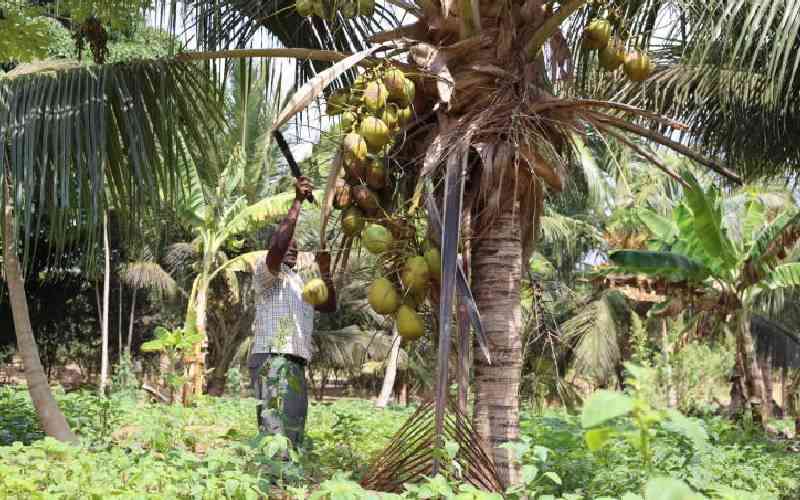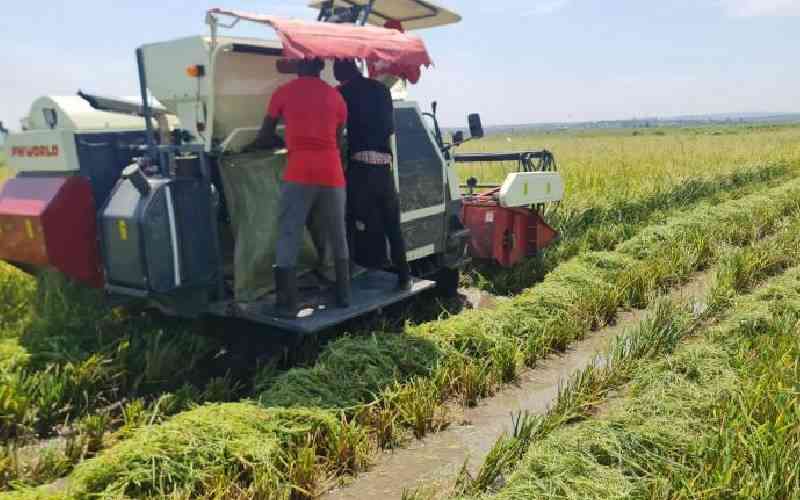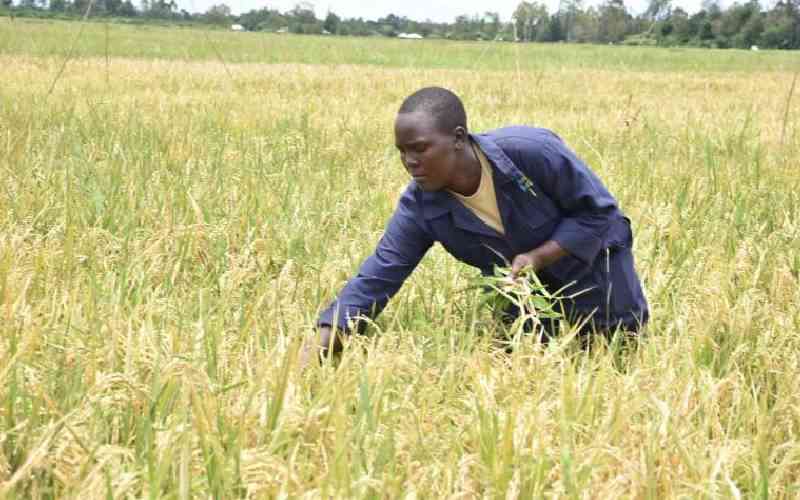Five years ago, Moses Githaiga from Kieni constituency, Nyeri County, used to sharpen knives for a living. He used a bicycle to move from house to house sharpening clients’ knives for as little as Sh10 per knife.
“After one year of sharpening knives, I started selling red onions. I would travel to Kiawara Market in Kieni constituency where I would buy the onions from the farmers and sell them in Nyeri town,” Githaiga explains.
However, he soon realised there was a huge shortage of garlic in the market.
Make a difference
So he decided to tap into that.
“I bought 20 kilos of garlic from an agro vet shop without realising that garlic takes six months from seed level to maturity. Two months are spent in the nursery and the next four months in the shamba,” says the 29-year-old farmer.
To get more information, he went online and did research on all things garlic.
“I did intense research online on garlic farming and got a lot of useful info to boost production. I also spoke extensively to different agrovets who broadened my knowledge on the same. With time, I became an expert,” he says.
Armed with info, Githaiga decided to produce his own seedlings to reduce the amount of time wasted waiting for the crop to mature.
Red onions and garlic usually need two months in a seedbed and then four months on the farm before they are harvested. However, Githaiga ensures that once processed, the garlic seeds germinate and are ready to be transplanted to the farm directly.
This means it only takes the garlic farmer four months to harvest the crop unlike red onion farmers who wait six months to reap their produce.
“I set up a processing centre where I prepare the garlic seedlings. To begin with, I dry the garlic and then sterilise it before I soak the garlic in a cocktail of organic hormones after which I put them in a cool area to germinate,” Githaiga says.
Tidy sum
He says the use of organic hormone stimulates the garlic seedling to mature faster and thus they germinate in two weeks.
He sells the seedlings for Sh390 per kilo. Between February and May, he says he sold 6,000kgs of seedlings which raked in Sh2.34 million. One advantage of preparing his seedlings is that it reduces the amount of time for the garlic to be harvested once planted.
Stay informed. Subscribe to our newsletter
Garlic also has a longer shelf life and can remain edible for up to six months and the profit margins are better than that of onions.
With seedlings ready, his journey to farm garlic was now halfway complete, he had seedlings and was ready to start farming.
“I rented an eighth of an acre in Kiawara and planted garlic and after four months I harvested 500kgs and sold a kilo at Sh250 making Sh125,000,” Githaiga shares.
Demand is big
The next season, he increased the acreage to half an acre and reaped 1,900kgs earning Sh475,000. The following season, he planted garlic on three acres and reaped 10,000kgs of garlic earning Sh2.5 million. This gave rise to Saumu Centre Ltd, which sells fresh garlic and garlic seedlings to various markets.
“I realised I could make money selling garlic because the market prices rarely fluctuate. This means regardless of the month I harvest, I still make good money,” Githaiga says.
He, however, could not match demand for garlic.
“The demand is high, and the price of garlic rarely fluctuates from Sh250 which means you can sell it throughout the year if you plant every month,” Githaiga says.
Fresh garlic
To address the problem, in 2013, he approached farmers and offered to train them on how to plant garlic.
“I trained them on how to plant and care for garlic. Unfortunately it became clear they could not access any seedlings which forced me to begin processing fresh garlic into seeds and eventually seedlings for sale to farmers,” Githaiga says.
Saumu Centre now has about 500 farmers who buy seedlings as well as sell their produce every four months, which is least 200,000kgs of garlic for sale. Currently Githaiga has planted garlic on six acres and expects to harvest at least 24,000kgs, which could earn him Sh6 million.
The seedling business takes up most of his resources because he has to pay for labour costs and train farmers.
“I have five permanent employees who help with the processing of seedlings and occasionally I employ casual labourers when I need to process a large order of seedlings,” says the farmer.
To reap bumper harvest from garlic the key principles are to ensure that you use manure in the soil, water once a week and one bag of NPK 171717 fertiliser and one bag of CAN fertiliser at the end of the second month.
“Weeding is also an important step in garlic farming and depending on the size of your farm, you may need to either use chemical weeding or manual weeding which would be costly,” he notes.
Githaiga prefers chemical weeding to reduce the cost of paying labourers as much as Sh10,000 to weed each acre.
But what are the challenges he faces?
Githaiga says his biggest headache is access to clean water.
“Garlic consume a lot of water so every time I need access to volumes of water for the crops. Kiawara area is semi-arid so I rely on irrigation and sometimes rain water. I also set up a water pan near the farm to ensure my garlic plants do not wither,” he explains.
His future plan is to expand his business to tap into the lucrative international markets.
The Saumu Centre proprietor says he is yet to sign any deals to export fresh garlic.
“I realised that the export market would demand large volumes of fresh garlic which I cannot supply. I will explore the international market once I am sure I can meet the huge demand. In the meantime, I will focus on the local markets,” Githaiga says.
 The Standard Group Plc is a
multi-media organization with investments in media platforms spanning newspaper
print operations, television, radio broadcasting, digital and online services. The
Standard Group is recognized as a leading multi-media house in Kenya with a key
influence in matters of national and international interest.
The Standard Group Plc is a
multi-media organization with investments in media platforms spanning newspaper
print operations, television, radio broadcasting, digital and online services. The
Standard Group is recognized as a leading multi-media house in Kenya with a key
influence in matters of national and international interest.
 The Standard Group Plc is a
multi-media organization with investments in media platforms spanning newspaper
print operations, television, radio broadcasting, digital and online services. The
Standard Group is recognized as a leading multi-media house in Kenya with a key
influence in matters of national and international interest.
The Standard Group Plc is a
multi-media organization with investments in media platforms spanning newspaper
print operations, television, radio broadcasting, digital and online services. The
Standard Group is recognized as a leading multi-media house in Kenya with a key
influence in matters of national and international interest.








